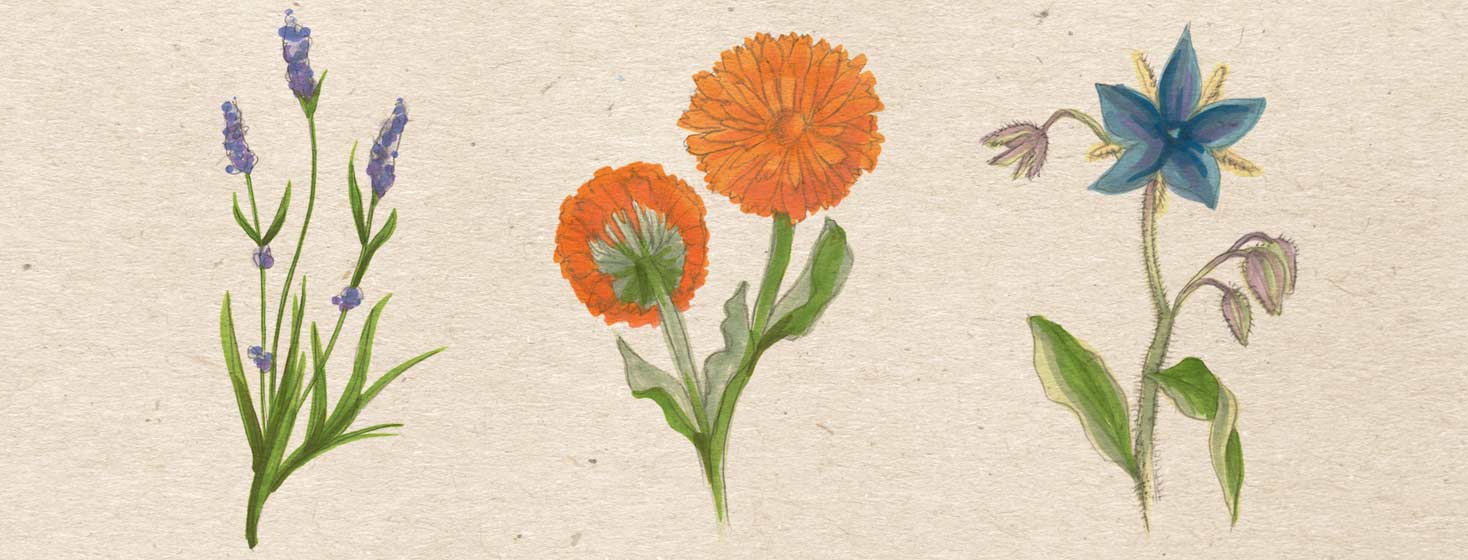Psoriasis Remedies You Can Grow In Your Garden
I don’t know about you but as soon as Santa leaves I’m counting down the days until summer. The depressingly cold weather of the East Coast isn’t kind to my skin, or my mood. As I sat, bundled in my parka, gloves, and hat, in my back yard, dreaming of spring and summer, staring at an empty patch of land where a garden should be, I wondered... what could I plant here?
Benefits of plants
O.K., so maybe I’m being a bit dramatic. I wasn’t actually sitting in my back yard on a lawn chair just waiting for spring to arrive but I did look out the window. And I did wonder what I could plant. In my quest to find natural psoriasis remedies over the course of winter, I recalled stumbling across some articles that mentioned herbs and essential oils. I have always been a fan of oils- the soft smells that radiate from them and the way they seem to just melt my stress away. I even got into the habit of rubbing a dab of lavender essential oil on my palms before bed. And, I’ll have you know, I sleep like a baby. But aside from the fantastic smells, reduction of stress, and sleeping like a baby, what did oils have to offer my health and my skin?
After a bit of research, I found some beautiful plants that were not only aesthetically pleasing but would also benefit my body.
Lavender
The Lavandula angustifolia, or English Lavender plant, is actually an herb from the mint family. We are probably most familiar with the species of lavender that displays tall, purple (lavender) leaves. And while the plant itself is lovely, it also provides tons of health benefits. It has been known to reduce stress, insomnia, headaches, and even toothaches. Lavender is a personal favorite for me because my psoriasis, as is the case with most people, seems to pop up around times of stress. So this will be a must-have in my garden as it helps me with my 3 favorite “S” problems: stress, sleep, and skin.
How to Use: Rub some oil on your temples to reduce stress, put a few dabs on your pillow for a good night’s sleep, or throw a few drops into a scent-free body lotion.
Borage
The Borago officinalis, or Borage plant, also known as starflower, is a medicinal herb with edible leaves and flowers. Externally, it is often used for hair and skin conditions (ahem) such as hair loss, eczema, acne, and psoriasis. It has also been known to help with arthritis (for all my PsA warriors out there). When rubbed on the skin, the oil offers soothing relief from itching, redness, and discomfort. Borage extract also has some internal benefits. It is one of the most abundant sources of gamma linolenic acid (GLA). GLA is an essential fatty acid that, once absorbed into the body and skin, has anti-inflammatory properties. And like lavender, borage has also been known to reduce stress.
How to Use: Throw some leaves in your salad, freeze them in your ice cubes, or just rub some oil on affected areas of your skin. The uses for Borage are seemingly endless!
Calendula
The Calendula officinalis, or Marigold, is part of the daisy family. The bright yellow and orange flowers are typically seen in any garden or plant section. This one is a definite favorite for me because they are easy to grow and have so many medicinal uses, both externally and internally. Ancient cultures often used the calendula for its healing properties, including treatment of many skin conditions. During the American Civil War, they were even used on the battlefields as antiseptics on open wounds and as dressings to promote healing. Plant pharmaceutical studies show that calendula oil reduces inflammation and soothes irritated skin tissue.
How to Use: Apply some calendula directly to your skin in the form of an oil or balm, infused some into your tea, or sprinkle some leaves into your food.
*Please do not consume or apply any of the plants listed without first consulting your doctor
As a big fan of oils, I have definitely done my fair share of purchasing them. This year, I'm looking forward to a colorful garden with some impressive colors as well as health benefits.
Make your own infused Calendula Oil
(Keep in mind that infused is not the same as essential and will be less potent. You can certainly make your own essential oil but I have found that the process is a little longer and more expensive)
Supplies and Ingredients:
- 1 1/2 cups of dried organic calendula flowers
- 1 3/4 cups of carrier oil (olive oil, almond oil, avocado oil, and sunflower oil are some great options)
- A clean 16-oz glass mason jar with a lid
Instructions:
- Add your calendula flowers and your oil to a small sauce pan.
- Heat on low for about 4 hours. Stir occasionally.
- Cool and store in a glass jar with a tight lid.
- Label your oil and store in a cool and dark place for up to one year.

Join the conversation